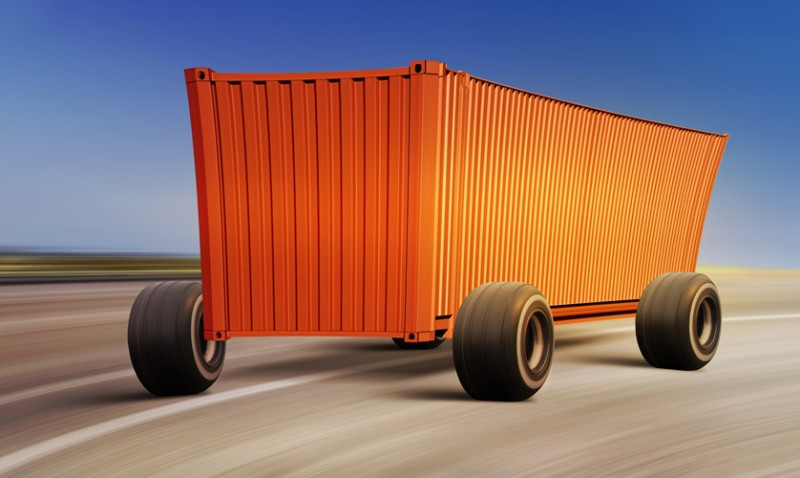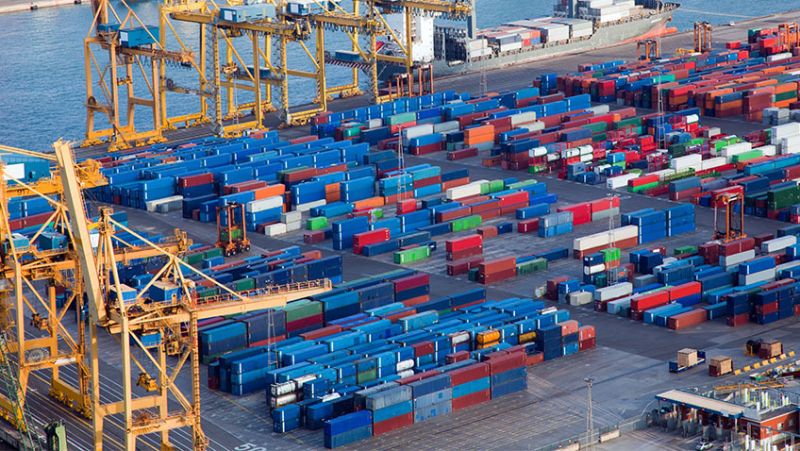
When embarking on your next home renovation, retail sourcing, or interior design project, one crucial consideration is how your materials or goods make their way from overseas suppliers to your doorstep. Whether you're a DIY enthusiast ordering personalized tiling from Italy, a young professional sourcing custom furnishings from Asia, or a designer procuring artisan lighting from Morocco, understanding the import process is essential. That’s where freight forwarders come in.
Think of a freight forwarder as your personal shipping expert – managing the logistics, paperwork, and transport so your goods move safely, compliantly, and on schedule. In this blog, we’ll break down the import process with a freight forwarder, helping you avoid costly delays and take the guesswork out of international shipping.
What is a Freight Forwarder?
A freight forwarder is a logistics intermediary that organises the transportation of goods on behalf of individuals or businesses. They're not the actual carriers – they don’t own planes or ships – but they work with trusted logistics partners worldwide to move your goods efficiently from supplier to final destination in the UK.
For DIYers and industry professionals alike, freight forwarders offer a huge benefit: they handle the complex paperwork, customs formalities, and transport coordination, so you don’t have to. Whether you’re importing a one-off order for your home renovation or managing regular shipments as an interior designer or trade supplier, freight forwarders are the go-to experts to make it happen.
Some of the services a freight forwarder typically offers include:
- Arranging transport from supplier to port/airport
- Booking space on ships, planes, or trucks
- Handling export and import documentation
- Managing UK customs clearance
- Coordinating final delivery to your site, home, or warehouse
From LCL (less-than-container load) shipments for smaller DIY projects to full container loads (FCL) used by contractors and design firms, freight forwarders help scale solutions to your specific needs.
Step-By-Step: What Does the Import Process Look Like?
To demystify the experience, here is a breakdown of the import process with a freight forwarder, focusing on the UK market.
1. Sourcing Your Products
Everything starts with finding the right supplier. Whether you're sourcing high-end tiles from Spain, designer lighting from the US, or artisanal furniture from India, once you’ve selected your goods, you’ll need to get the product details needed to start planning the import. This includes dimensions, weights, packing formats, and Incoterms (e.g. EXW, FOB).
2. Booking with a Freight Forwarder
Once you’re ready to ship, you or your supplier will contact a freight forwarder. Look for a UK-based company with international experience and transparent pricing. Provide them with all shipment details, including pickup address, destination postcode, product classification (commodity codes), and your preferred timeline.
The freight forwarder then tailors a solution, recommending the best method – air, road, or sea – and providing a quote including all major shipping steps. You’ll then confirm the booking and sign the required paperwork.
3. Export & Origin Handling
The freight forwarder arranges for the goods to be picked up from your supplier and delivered to the origin port or warehouse. They also ensure that origin customs paperwork is ready – including packing lists, commercial invoices, and export licences if needed.
At this stage, the forwarder consolidates your shipment (if using LCL), books it onto a departure, and ensures everything complies with both local and UK regulations.
4. International Transit
Your goods are now in motion. Depending on the method, this could take:
- 7–14 days by sea from Europe
- 3–6 weeks from Asia or the US by sea freight
- 2–7 days by air freight globally
The freight forwarder monitors and updates you with tracking reports throughout the journey and manages any in-transit changes or delays.
5. UK Customs Clearance
When your shipment arrives in the UK, it must pass through customs. This is where your freight forwarder’s experience is invaluable. They handle the import declaration to HMRC, determine the correct classification and VAT/Duty amounts due, and ensure compliance with product safety, importing licensing, or sustainability rules.
If there are delays, such as missing compliance certificates or incorrect codes, the forwarder communicates and resolves them swiftly to avoid added storage fees or rejections.
6. Final Delivery in the UK
Once cleared, your goods are either forwarded to your nominated address (home, site or studio) or sent to a local warehouse for pick-up. Delivery timelines will depend on whether the shipment is FCL or LCL, and your preferred delivery mode (tail-lift truck, van delivery, etc.).
For tradesmen or designers who need timed deliveries to job sites, this is where forwarders can coordinate with your installation schedules, ensuring no project downtime.
Cost Breakdown: What Should You Expect to Pay?
Understanding what's included in your quote is essential. Here's a typical cost structure for importing goods with a freight forwarder into the UK:
| Service | Description | Estimated Cost |
|---|---|---|
| Freight Charges | Covers international transit (air/sea/road) | £100–£2,500+ depending on weight/distance |
| Handling & Documentation | Booking, export paperwork, packaging handling | £50–£200 |
| UK Import Duty | Varies per product classification (0%–12%) | Based on product value |
| Import VAT | Typically 20% of product + shipping value | Reclaimable for VAT-registered businesses |
| Customs Clearance Fees | Paid to forwarder for declaration services | £25–£100 |
| Final Delivery | Shipping to your address/site in UK | £40–£300 based on distance and size |
These are just ballpark figures – your freight forwarder will break down the final cost based on your actual shipment profile. For large or recurring orders, many will offer volume discounts.
Tips for a Smooth Import Experience
Ready to simplify your global sourcing strategy? Here are key pointers to streamline your import experience:
- Use the Right Commodity Codes: Ensure your products are classified correctly to avoid delays or extra charges.
- Ask for FOB Pricing: When ordering, ask your supplier to quote with delivery to the nearest port (FOB terms) to make costs clearer.
- Work with a UK-Based Forwarder: Easier communication, familiarity with UK customs, and local delivery options make the process smoother.
- Bundle Orders when Possible: For LCL goods, consolidating several items into one shipment reduces cost per item.
- Ensure You Have an EORI Number: This is required for anyone importing into the UK – apply via HMRC before initiating your first shipment.
- Consider Insurance: Ensure your goods are covered during transport, especially high-value items or fragile materials.
Final Thoughts
Sourcing globally can give you access to smarter pricing, unique designs, and better material choices. Whether you're a homeowner upgrading your kitchen, a designer curating signature looks, or a contractor managing materials for a client, working with a freight forwarder removes the stress of international shipping and customs.
Partnering with a reliable UK freight forwarder means importing with confidence, clarity, and predictability. With the logistics handled by experts, you’re free to focus on what you do best – design, build, and create breathtaking spaces.
Got a shipment on the horizon or unsure where to start? Our team offers personalised import solutions for DIYers, architects, and trades alike. Reach out today for a no-obligation quote and support through every step of the freight process.


